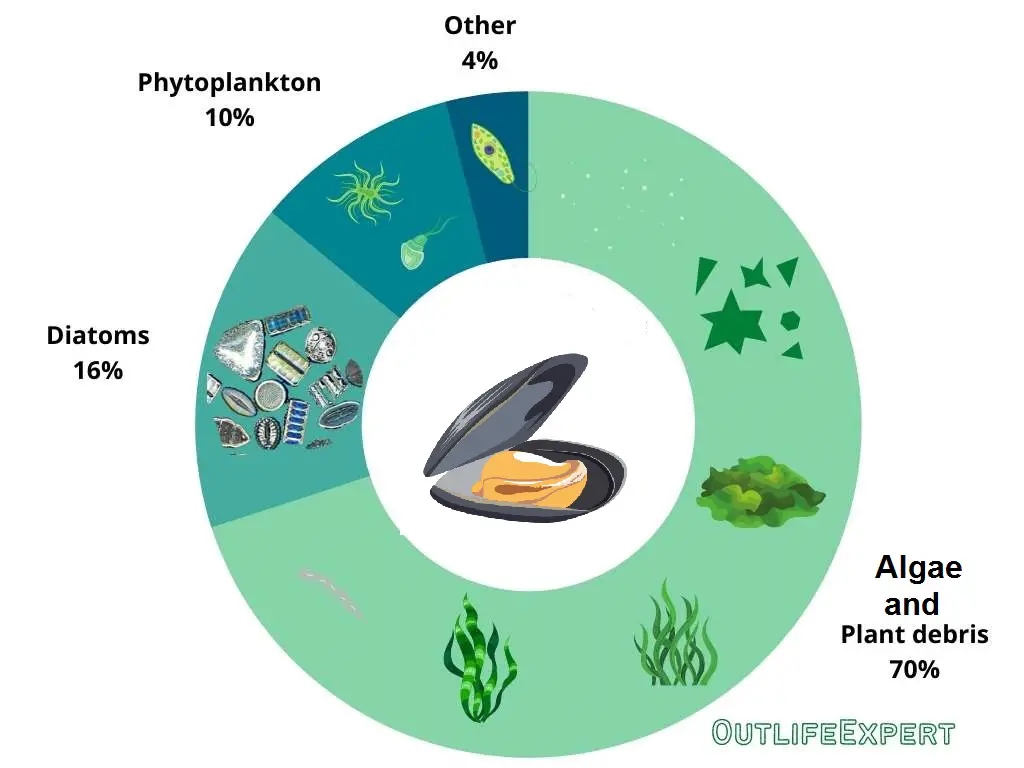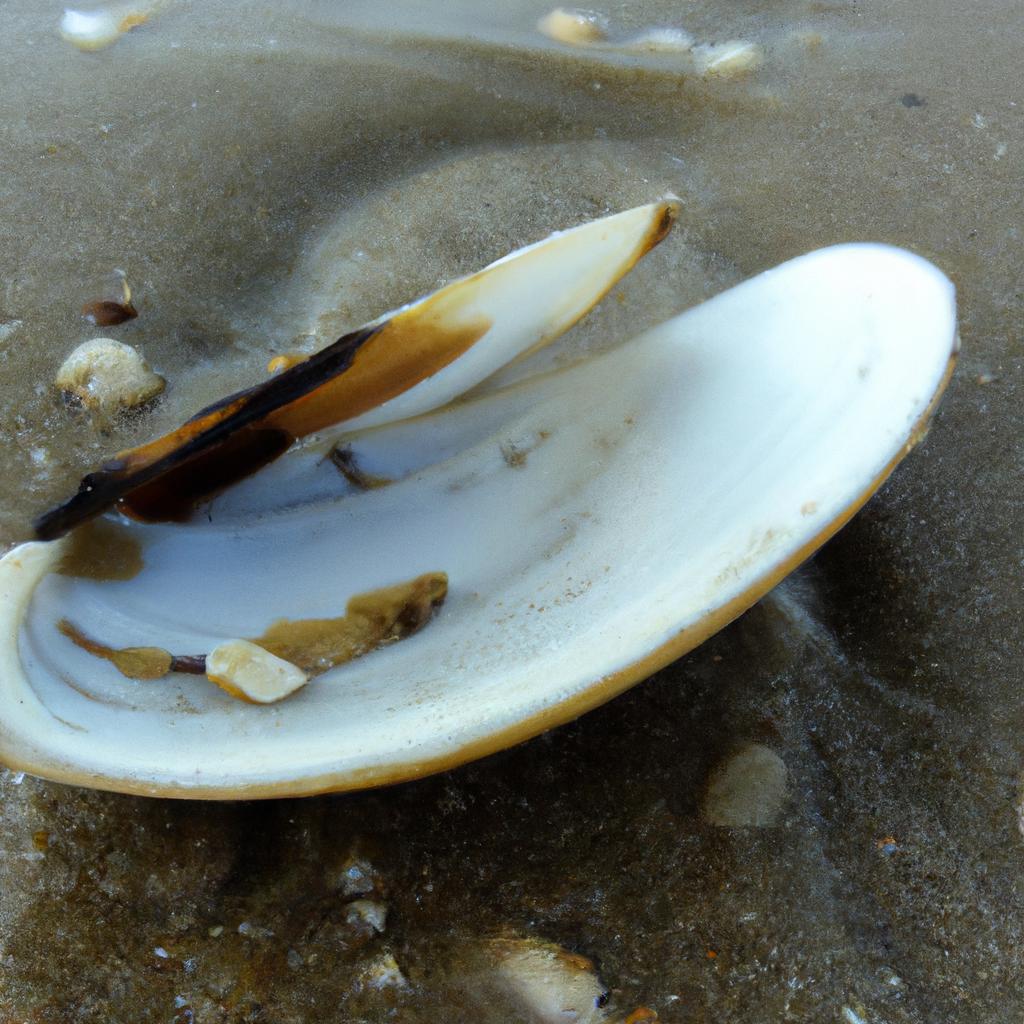Yes, clams do eat phytoplankton. In fact, they are a vital part of their diet. As filter feeders, clams consume various types of plankton, including phytoplankton. These microscopic plants provide essential nutrients for the clams’ growth and reproduction.
The Fascinating World of Clams
Clams might not seem like the most exciting creatures on Earth, but they are actually fascinating and essential to the marine ecosystem. They play a crucial role in filtering water, providing habitat, and serving as a food source for many other marine organisms. As a marine biologist, I have had the pleasure of studying these remarkable creatures in their natural habitat and have gained a deep appreciation for their role in maintaining the health of our oceans.
What are Clams?
Clams are bivalve mollusks, which means they have a two-part shell that is hinged together. They belong to the class Bivalvia, which also includes other shellfish like mussels, oysters, and scallops. Clams can be found in both saltwater and freshwater habitats, and there are over 15,000 species of bivalve mollusks worldwide.
How do Clams Eat?
Clams are filter feeders, meaning they consume food by filtering it from the water that passes through their bodies. They have a specialized structure called a siphon, which they use to draw water into their bodies. As the water passes through the clam’s gills, tiny particles of food, such as phytoplankton, are trapped and then transported to the clam’s mouth.

What is Phytoplankton?
Phytoplankton are microscopic, single-celled plants that float in the ocean’s sunlit surface waters. They are the base of the marine food web, providing food and energy for a wide variety of marine organisms. Through the process of photosynthesis, phytoplankton produce about half of the world’s oxygen and play a vital role in the global carbon cycle.
The Importance of Phytoplankton in a Clam’s Diet
Phytoplankton are a critical food source for clams, providing essential nutrients that support their growth and reproduction. The type and abundance of phytoplankton in the water can have a significant impact on the overall health and population of clams in a given ecosystem.
Clams as Filter Feeders
As filter feeders, clams help maintain water quality in their habitats by consuming excess nutrients and organic matter, such as dead plants and animals. This filtering process helps prevent harmful algal blooms and keeps the water clear and healthy for other marine organisms.
Clams as a Food Source
Clams serve as an important food source for many other marine organisms, including fish, birds, and even humans. The health and abundance of clam populations can directly affect the overall health of the marine food web. In turn, the health of the clam population is heavily dependent on the availability of phytoplankton as a food source.
The Effects of Environmental Changes on Clam Populations
Various environmental factors can impact the abundance and distribution of phytoplankton, which in turn can affect clam populations. Climate change, nutrient pollution, and ocean acidification are just a few of the factors that can lead to changes in phytoplankton communities and have cascading effects on the marine food web.
In Conclusion: Do Clams Eat Phytoplankton?
Yes, clams do eat phytoplankton, and their diet plays a crucial role in maintaining the health and balance of the marine ecosystem. Here are ten facts about the relationship between clams and phytoplankton:
1. Clams are filter feeders that consume food by filtering it from the water that passes through their bodies.
2. Phytoplankton are microscopic, single-celled plants that float in the ocean’s sunlit surface waters.
3. Phytoplankton serve as the base of the marine food web, providing food and energy for a wide variety of marine organisms.
4. Clams rely on phytoplankton as a primary food source to support their growth and reproduction.
5. The type and abundance of phytoplankton in the water can have a significant impact on the overall health and population of clams in a given ecosystem.
6. Clams help maintain water quality in their habitats by consuming excess nutrients and organic matter, such as dead plants and animals.
7. Clams serve as an important food source for many other marine organisms, including fish, birds, and humans.
8. The health of the clam population is heavily dependent on the availability of phytoplankton as a food source.
9. Various environmental factors, such as climate change and nutrient pollution, can impact the abundance and distribution of phytoplankton, which in turn can affect clam populations.
10. A healthy relationship between clams and phytoplankton is essential for maintaining the health and balance of the marine ecosystem.
FAQs
What type of clams eat phytoplankton?
Most clams are filter feeders and they eat phytoplankton as their primary food source.
What does clam feed on?
Clams are filter feeders and they feed on plankton and other microscopic organisms that they filter from the water.
Do giant clams eat zooplankton?
Yes, giant clams are filter feeders and they consume zooplankton as well as phytoplankton and other small organisms that they filter from the water.
What do hard clams eat?
Hard clams are filter feeders and they feed on plankton, algae, and other microscopic organisms that they filter out of the water using their gills.
Do hard clams eat phytoplankton?
Yes, hard clams (Mercenaria mercenaria) are filter feeders that primarily consume phytoplankton as well as other small particles suspended in the water.
Do clams eat phytoplankton or zooplankton?
Clams primarily feed on phytoplankton, but they may also consume small amounts of zooplankton.




